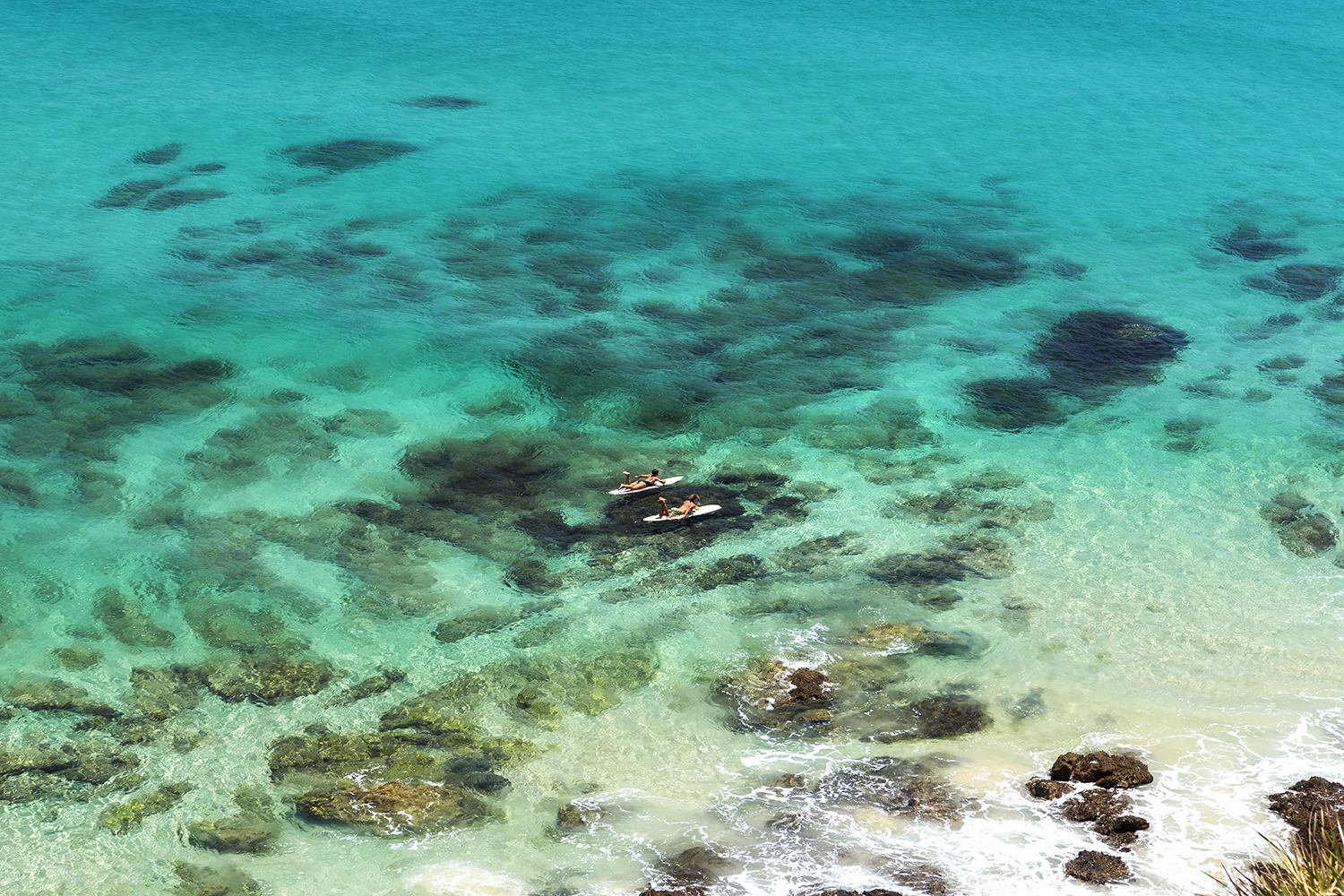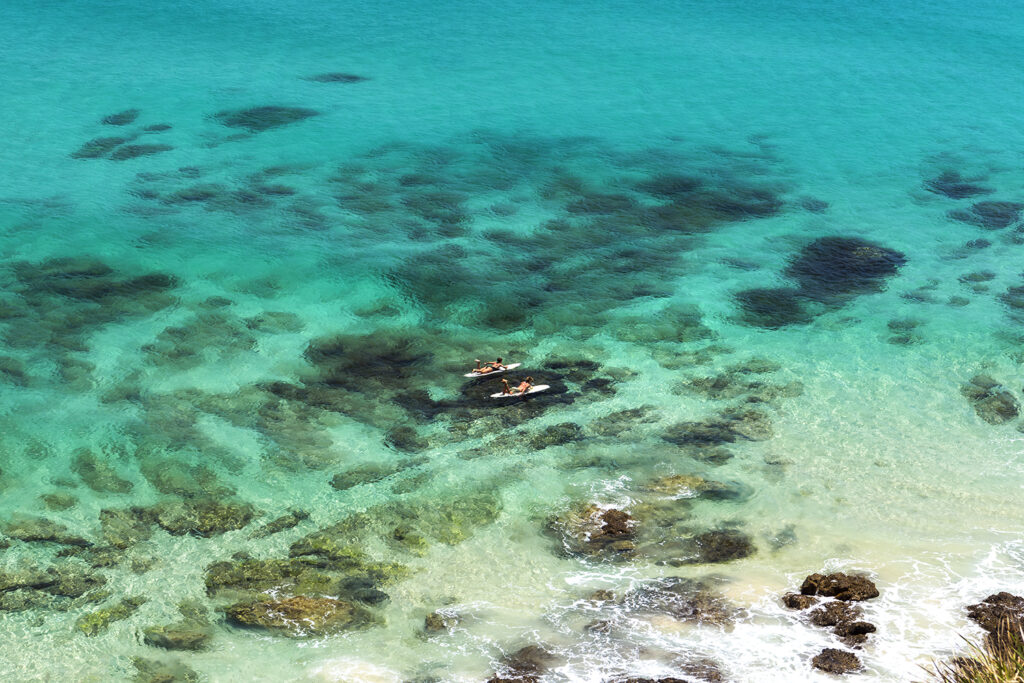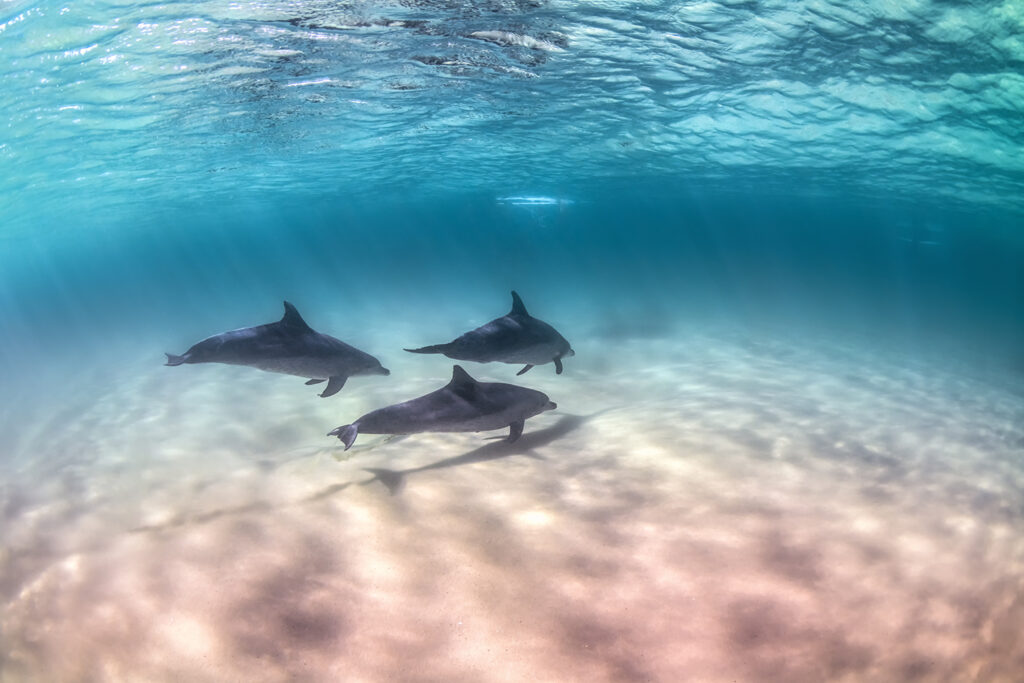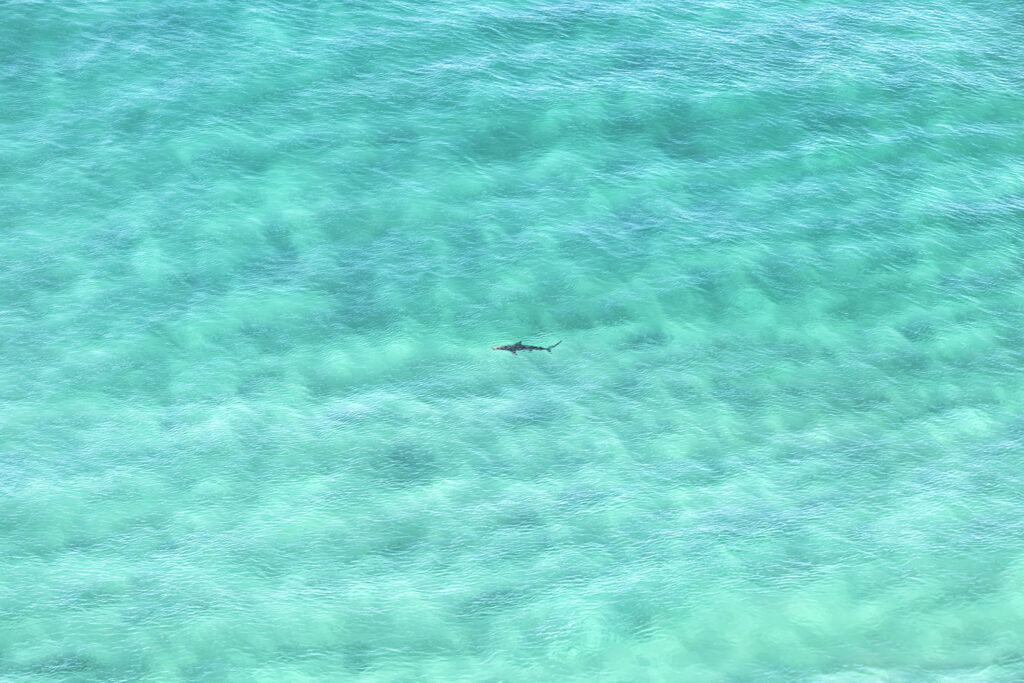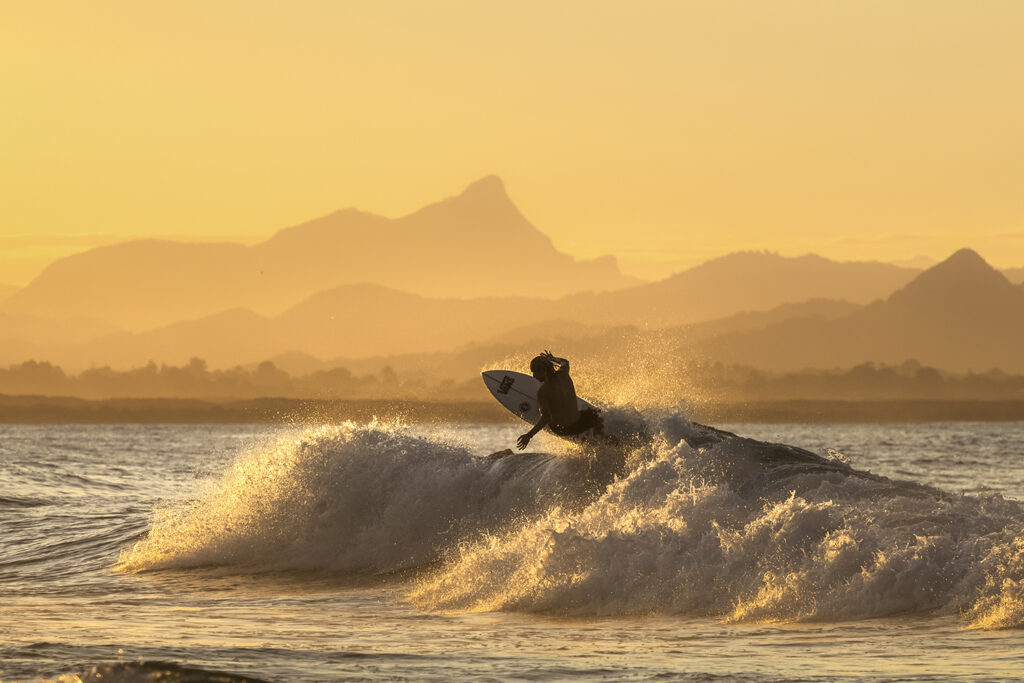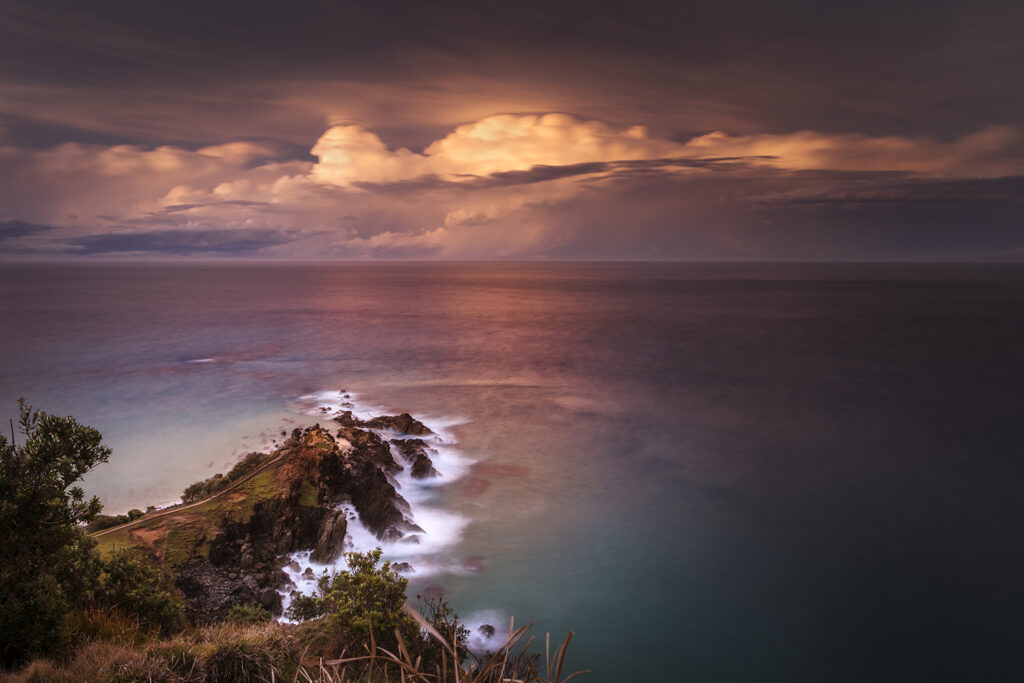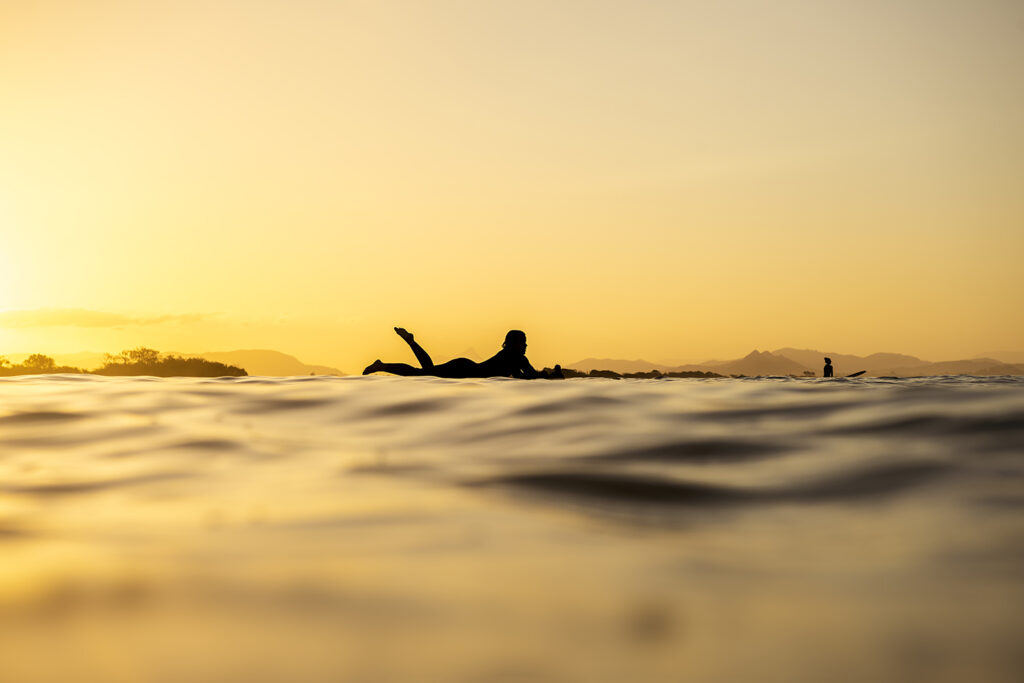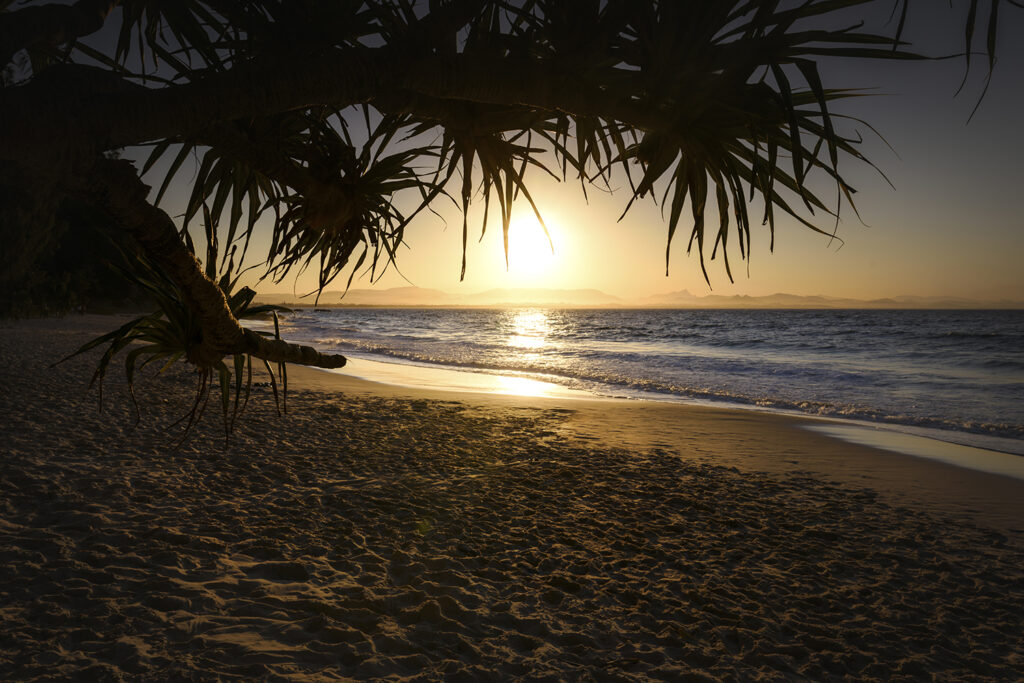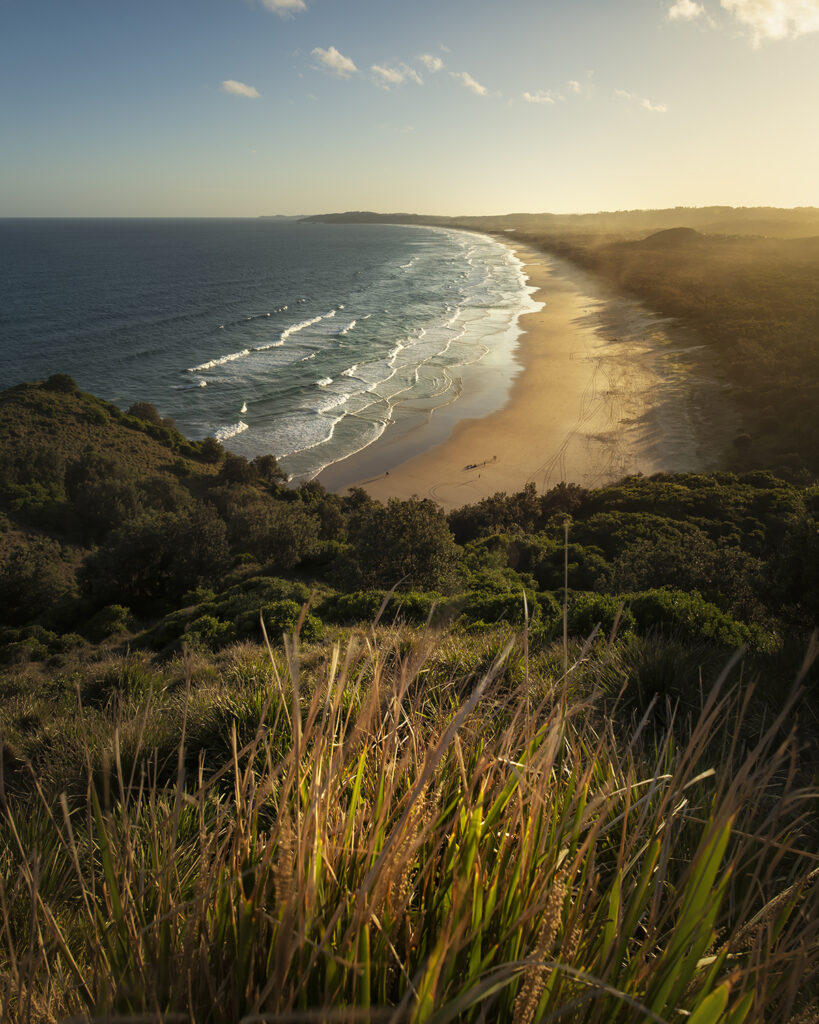Byron Bay sits at the easternmost point of mainland Australia. Known for its relaxed atmosphere and creative spirit, the town is surrounded by natural beauty and a vibrant marine ecosystem. Here, temperate and tropical waters meet, making the sea life exceptionally rich and diverse. Dolphins ride the waves, sea turtles drift in the shallows, and sharks patrol the deeper waters. Byron’s iconic beaches — Wategos, The Pass, and Tallow Beach — are loved by surfers from around the world.
Walking up to Cape Byron Lighthouse and continuing along the track to Wategos Beach is one of the most uplifting experiences on the East Coast. During winter, humpback whales pass by the headland, and if you’re lucky, you might catch a glimpse of marine life playing in the surf far below.
If you ever find yourself in Byron Bay, I highly recommend ending your day with a walk to the lighthouse. From there, you can watch the sun sink behind Mount Warning, or Wollumbin as it’s traditionally known. Captain James Cook named it Mount Warning after spotting it from the ocean, but for the Bundjalung people, Wollumbin is a sacred site steeped in cultural significance.
As the golden light reflects on the bay’s surface and silhouettes the mountains in the distance, everything slows — the land of magic, the true spirit of Byron Bay — wrapped in a dreamlike calm that lingers long after the sun disappears.
The traditional custodians of this land, the Bundjalung people, called this area “Cavvanbah,” meaning “meeting place.” And that’s exactly what it is – a place where the soul meets the body, where dreams blur with reality, and where the elements converge in a rhythm that feels eternal.
Since my first visit in 2011, Byron Bay has held a special place in my heart. I’ve returned countless times, and it continues to surprise me with moments of wonder and beauty. To me, it truly is the Land of Magic.
Cape Byron Lighthouse stands proudly atop the most easterly point of the Australian mainland. Built at the turn of the 20th century, it has guided countless ships and now watches over the bay with its powerful light. The headland rises almost 100 metres above sea level, offering sweeping views of the Pacific Ocean. The lighthouse itself stands 22 metres tall and houses a rare first-order Fresnel lens, visible for nearly 50 kilometres out to sea.
Once manned by lighthouse keepers, it’s now fully automated – but the stories remain. The surrounding headland, known as Walgun to the local Aboriginal community, is jointly managed with the Arakwal people, honouring the deep connection between land, culture, and sea.
